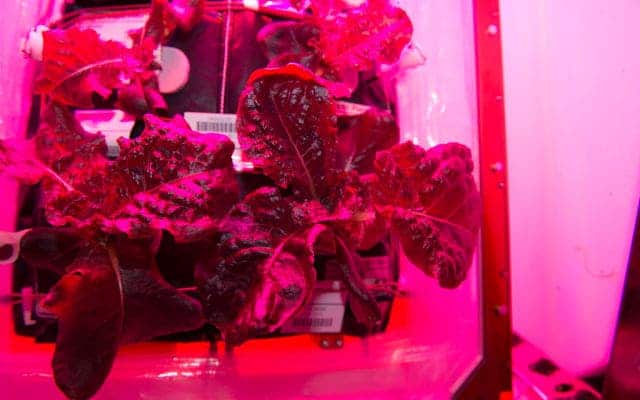
Between 2014 and 2016, astronauts aboard the International Space Station (ISS) planted the first open-air garden in space. The crew planted and harvested red romaine lettuce, which subsequent tests revealed it was safe for human consumption. A new study now found that the microgravity-grown lettuce is not only as delicious as it’s Earth-grown counterpart but also just as nutritious.
A step closer to colonizing the extra-terrestrial
Researchers at NASA’s Kennedy Space Center studied the effects of space conditions on the vegetables by comparing red romaine lettuce (Lactuca sativa) planted in growth chambers on the ISS to that harvested from ground-grown plants.
To determine food safety, the researchers analyzed the species and number of bacteria and fungi found on the surface of each type of lettuce. The ISS vegetables had more microorganisms but none of them were harmful to humans.
The vegetables’ leaves were also analyzed for elemental composition, with researchers finding that flight and ground tissue were largely the same in terms of nutritional value. In fact, some plants were even richer in elements such as potassium, sodium, phosphorus, sulfur, and zinc.
The findings, which were published in the journal Frontiers in Plant Science, have great implications for deep space travel.
At the moment, astronauts stationed on the ISS have access to enough food and water and are regularly re-supplied. A trip to Mars and back, however, could last years, time in which the crew would have to rely on a diet of nutrients in a tube. There would be no resupply missions either.
Growing food in a spaceship could supplement the crew’s diet with fresh produce. Additionally, fresh food would help fight menu fatigue and provide psychological comfort. To top things off, having plants in a spaceship or Martian outpost can also help life support systems by generating oxygen and removing carbon dioxide.
Of course, humans can’t live on lettuce alone, which is why NASA has run similar experiments with kale and cabbage. Other vegetables will soon follow later this year, such as pak choi, dragoon lettuce, wasabi mustard, and red Russian kale









